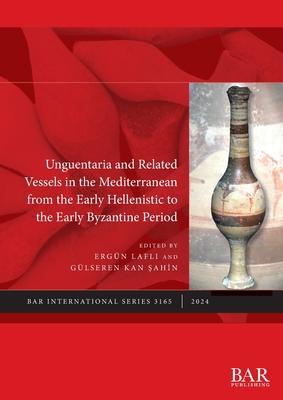This book provides comprehensive analyses of the clay and glass unguentaria and related vessels (such as pelikai and alabastra) from the Late Classical to the Early Byzantine periods that have been found across the Mediterranean. It defines these vessels, classifies them by type, dates them, and examines their contexts, functions, regional variations, probable contents, and distribution patterns.
The text presents evidence of how unguentaria evolved in type and how their shapes and decorations reflected their functions. It also explores the major production centers, methods, and innovations of unguentaria and related vessels. A primary aim is to outline a sensory approach to Greek and Roman burials and contribute to the "function versus form" debate. The conclusions contain implications for further research on funerary practices, local identities, and social statuses in settlements and their regions.
